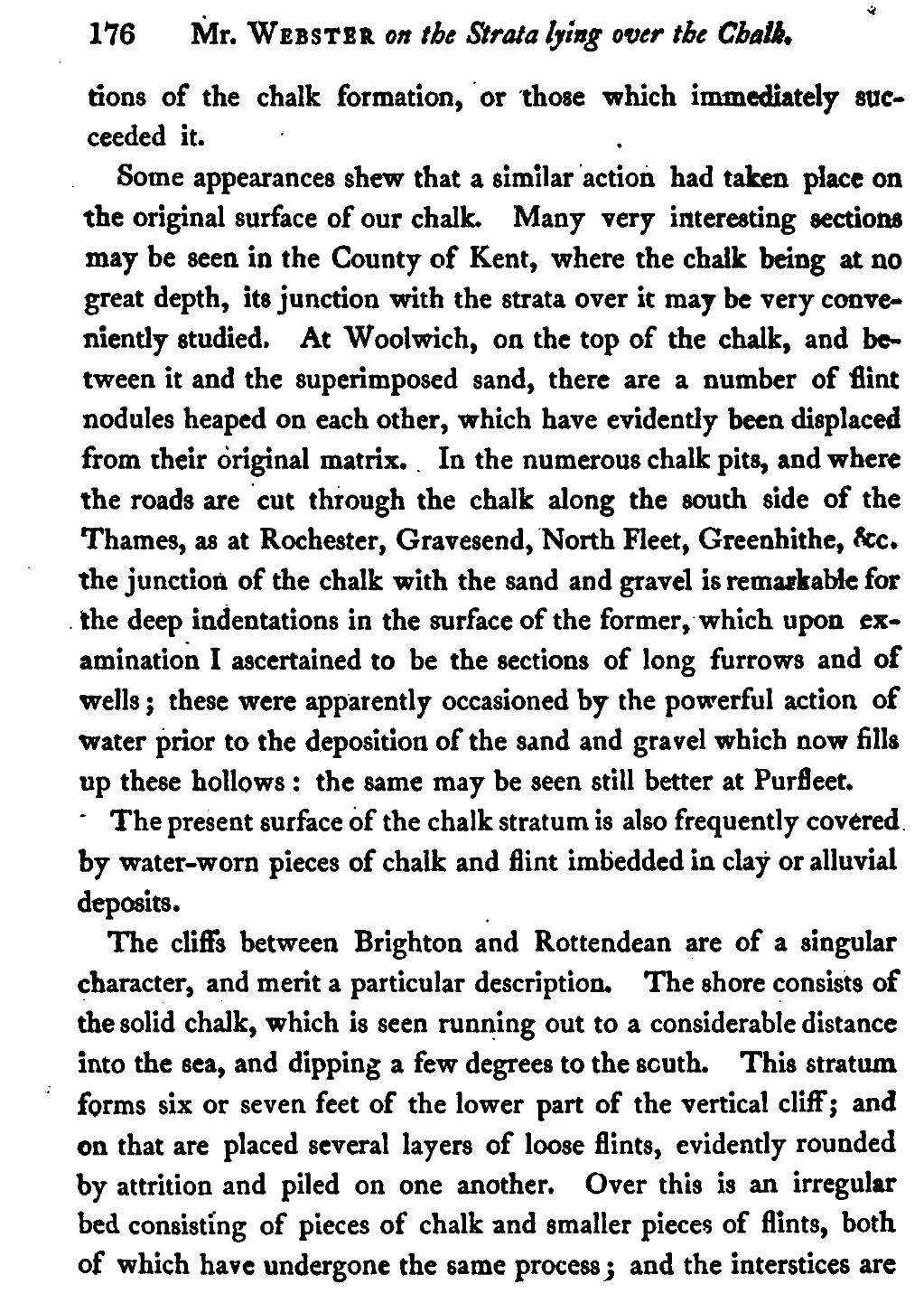tions of the chalk formation, or those which immediately succeeded it.
Some appearances shew that a similar action had taken place on the original surface of our chalk. Many very interesting sections may be seen in the County of Kent, where the chalk being at no great depth, its junction with the strata over it may be very conveniently studied. At Woolwich, on the top of the chalk, and between it and the superimposed sand, there are a number of flint nodules heaped on each other, which have evidently been displaced from their original matrix. In the numerous chalk pits, and where the roads are cut through the chalk along the south side of the Thames, as at Rochester, Gravesend, North Fleet, Greenhithe, &c. the junction of the chalk with the sand and gravel is remarkable for the deep indentations in the surface of the former, which upon examination I ascertained to be the sections of long furrows and of wells; these were apparently occasioned by the powerful action of water prior to the deposition of the sand and gravel which now fills up these hollows: the same may be seen still better at Purfleet.
The present surface of the chalk stratum is also frequently covered by water-worn pieces of chalk and flint imbedded in clay or alluvial deposits.
The cliffs between Brighton and Rottendean are of a singular character, and merit a particular description. The shore consists of the solid chalk, which is seen running out to a considerable distance into the sea, and dipping a few degrees to the south. This stratum forms six or seven feet of the lower part of the vertical cliff; and on that are placed several layers of loose flints, evidently rounded by attrition and piled on one another. Over this is an irregular bed consisting of pieces of chalk and smaller pieces of flints, both of which have undergone the same process; and the interstices are
